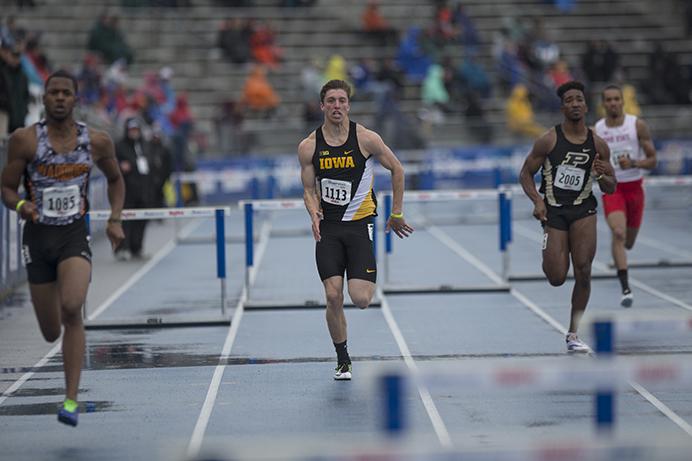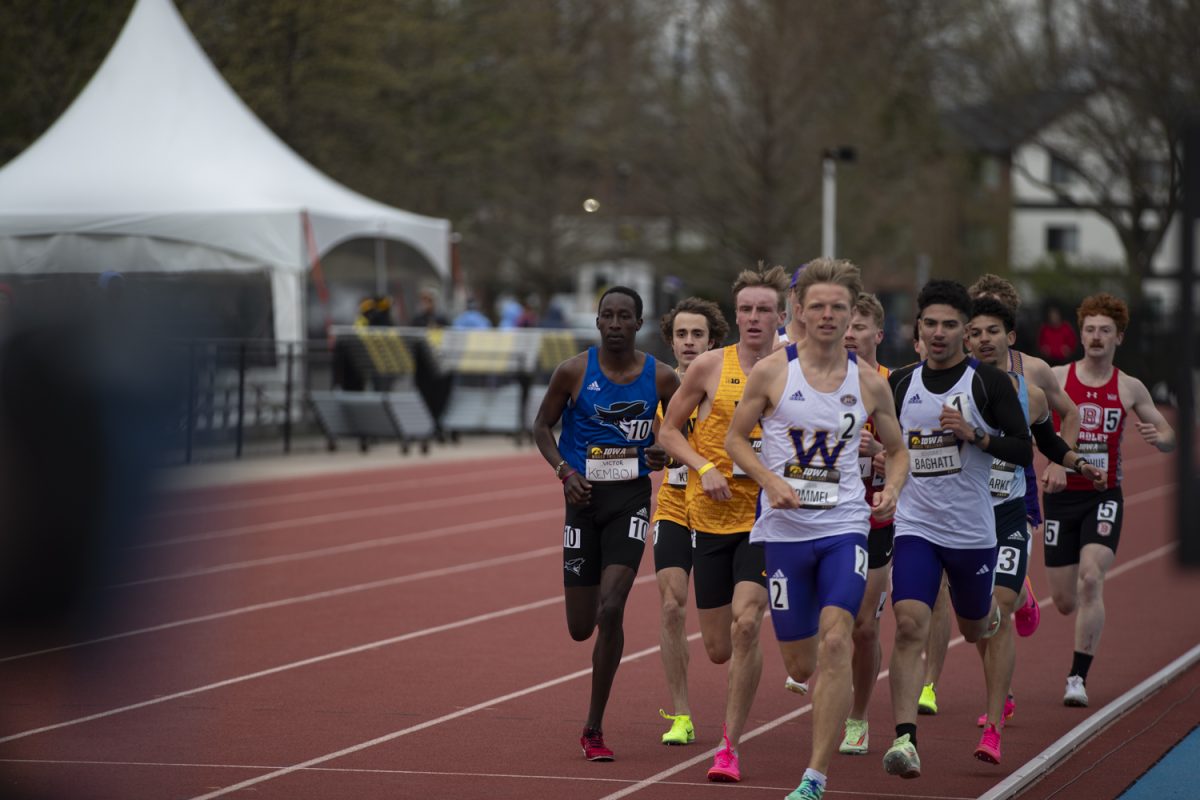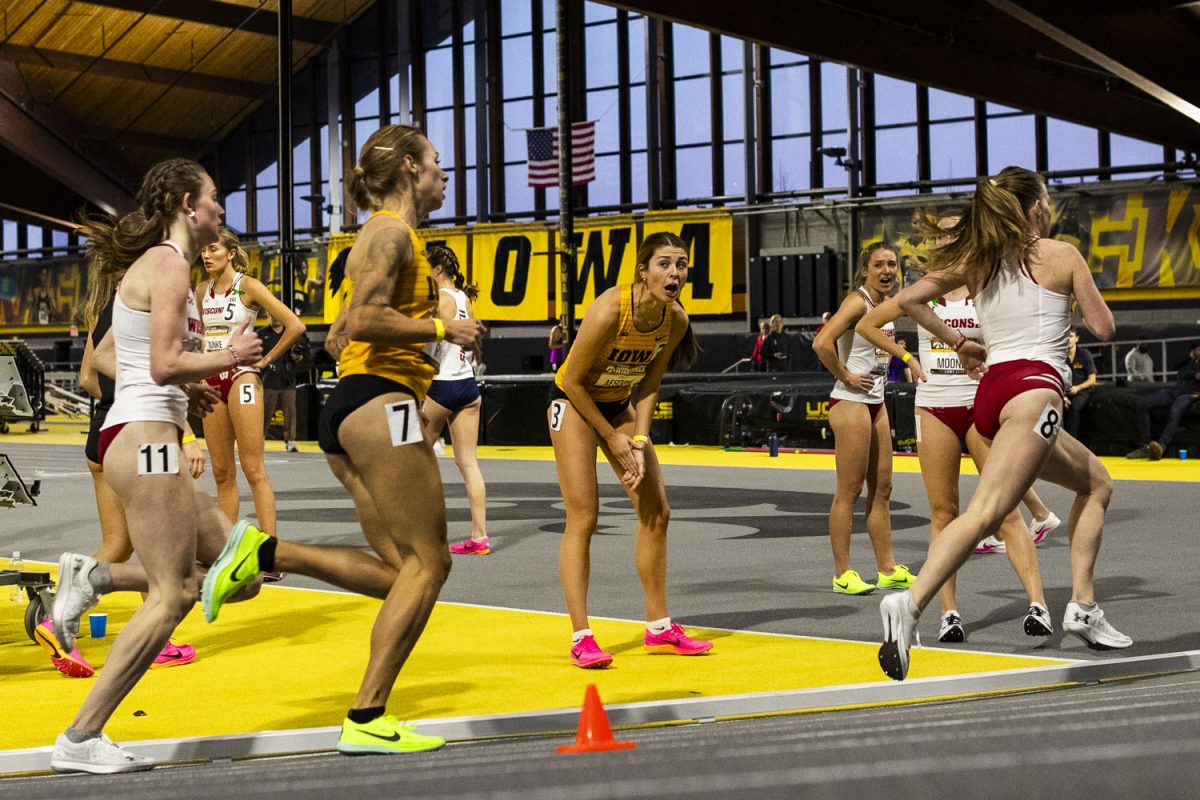By Carter Melrose
Once upon a time, Joey Woody was a track machine. He trained his entire life to run 15-steps between each hurdle, and while he was conditioning his body for this exact calculation, Woody also accounted for wind, stride length, and lane positioning. This, plus many other variables, made Iowa’s director of track and field a model for success in the 400-meter hurdles, a race that requires certain specifications.Woody, the prototypical 400-meter racer, came in second in Paris in the World Championships, one of his many race accomplishments.
Now in charge of the Hawkeyes, Woody preaches his firsthand, precise knowledge to his athletes.
“In the hurdles, everyone runs the same number of steps,” Woody said. “Never get too comfortable. I always say to keep a relaxed aggression.”
In what used to be Woody’s bread and butter, he now passes the torch to two Iowa racers: redshirt freshman Noah Larrison and senior Mitch Wolff.
“[Larrison] is a great story; he wasn’t highly recruited and was able to come here.” Woody said. “He’s made himself into an elite-level athlete, and now, it’s about staying consistent at those times.”
While Larrison surprised Iowa, Wolff’s been doing damage for some time now.
With a bright future for Larrison and Wolff in their prime, the two have started to slowly figure out the many mysteries involved when running the 400-meter hurdles.
“It’s a huge mental game,” Wolff said. “In hurdles, you have to change your entire race strategy all the time. There is X-number of steps you have to take before each hurdle, and if there is wind in your face, that means you have to increase your stride length [and] your stride cadence, should your body be on the inside of the lane or the outside.”
As the athletes discovered these nuances, they saw great improvement.
However, the biggest plague to both these runners is still, and might always be, the tail end of the event. The last 150 meters, otherwise known as the Valley of Fire, is the place where stamina goes to die.
They key is to make the most of gassed legs.
“It’s the fact that we have to jump,” Larrison said. “The last 150 is just killer. Some people helicopter arm over the last three hurdles; the last 150 is make or break.”
Larrison and Wolff agree the last 150 meters is the difference between an Olympian and an average college racer. If overcome, the mental stress in regards to the last three hurdles becomes a make-or-break point in a great 400-meter hurdle race.
No one questioned Woody’s mental toughness with his track résumé, but his advice can only go so far.
It’s up to Larrison and Wolff to figure things out themselves.










